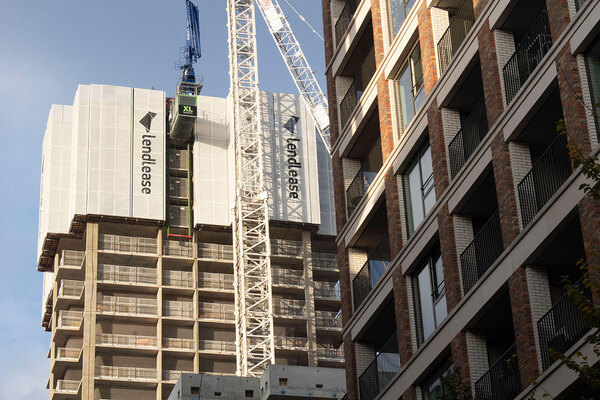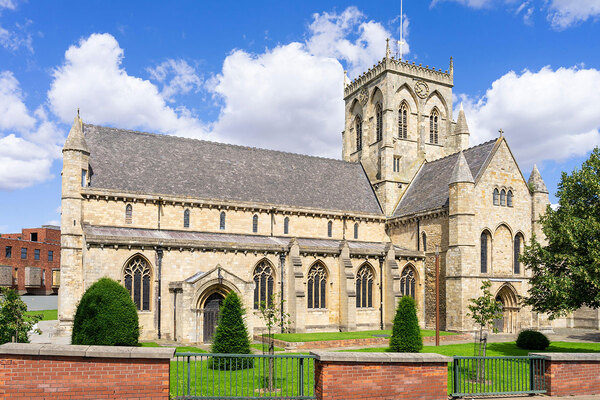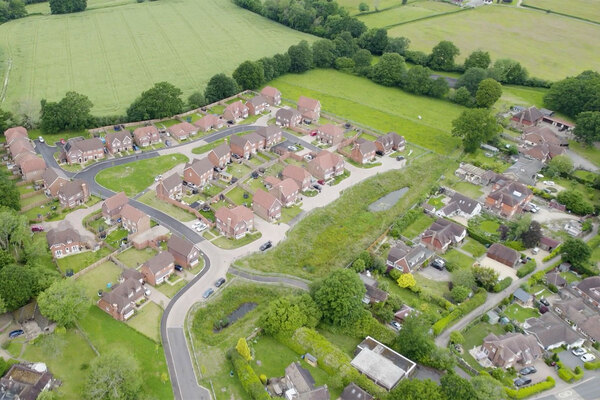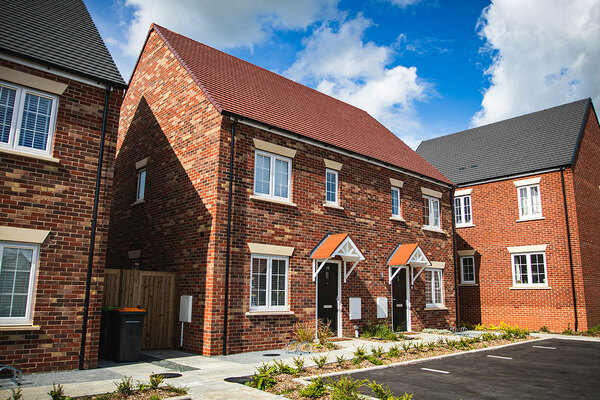Renew and refresh
Two landlords share their experiences of recent regeneration projects
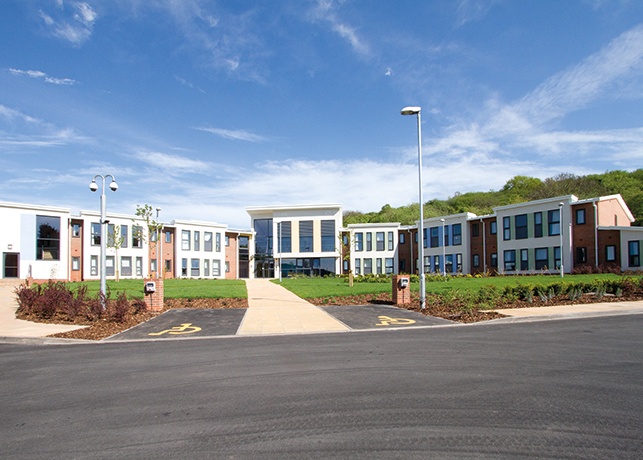
Saltbrook Place in Lye, Stourbridge, which houses vulnerable people
Article written in association with:

Midland Heart
Homes: 33,000
Contract value: £4.8m
Tenure: Supported
Built on the site of a former homeless hostel, Saltbrook Place in Lye, Stourbridge, is a two-storey supported housing development comprising 58 units of accommodation including 24 rooms with en-suite and 34 one-bed apartments.
The short-stay accommodation opened its doors in April 2015 and in six weeks had already welcomed 72 new people. In addition to providing much-needed accommodation for homeless and vulnerable people, customers also have access to an IT suite, learning kitchen and allotments as well as a library, doctor’s office and half-sized basketball court.
The building, developed by 33,000-home Midland Heart in partnership with Dudley Council and the Homes and Communities Agency, and delivered by United Living, has been “warmly received”, says Graham Bettam, head of contracts at Midland Heart.
Residents especially have responded well to having a new, refreshed building. This has been demonstrated by the number of regular empty units, or voids, at Saltbrook Place steadily declining.
“There are not as many voids as there were in the past,” says Mr Bettam. “It’s being very well looked after too, which with the nature of a building where residents live temporarily before moving on, is always a challenge.”
The end result has received plaudits. However, the road to completion brought a number of challenges along the way that had to be overcome before the project could succeed.
Initially, planning delays were caused by opposition to the development from a minority of local residents. There were also some technical issues for Midland Heart once work began on site.
“The site, which we have owned for well over 20 years, had never had a problem with water,” Mr Bettam explains. “But it’s just below farmland, and the minute our contractors broke into the ground and demolished the old building, it became an absolute bog, so we had to quickly turn our attention to this.”
He adds: “We faced challenges when putting the foundations in, keeping the site drained and pumping out groundwater, which was unexpected because the issue had not been highlighted in the original ground reports.”
The problems with surface water run-off were solved by the project’s contractor United Living, which redesigned the site’s foundation strategy using a cofferdam solution and traditional foundations in lieu of total piling. This minimised the design requirements and saved time and costs on site.
After overcoming the challenges of the initial start on site, Midland Heart’s team is very happy with the outcome and the work carried out by United Living, attests Mr Bettam.
“There were some challenges throughout the build on both sides,” he says. “It required an acceleration of the contract owing to some of the delays, but overall the outcome for everyone involved has been very successful.”
Since the development’s completion, Saltbrook Place has achieved a rating classed as ‘Very Good’ by BREEAM and picked up the development of the year prize at the Chartered Institute of Housing West Midlands 2015 awards.
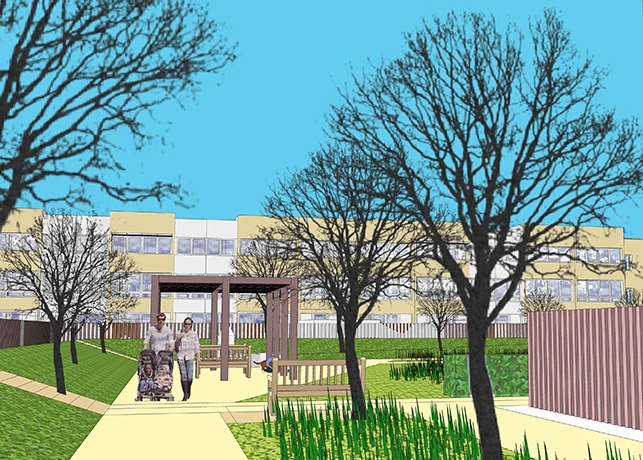
An artist’s impression of how Pollards Hill in Merton, London, will look after regeneration
Moat
Homes: 20,000
Contract value: £35m
Tenure: Mixed
Ever since it acquired Pollards Hill in Merton, London, from the local council in a stock transfer during the late 1990s, 20,000-home Moat knew that a large piece of regenerative work would need to be carried out on the estate.
The regeneration work began in 2004 when one side of the development, which is divided in two, saw a renewal programme put into effect. However, until recently the other half had not undergone any sign of the regeneration it sorely needed.
In September Moat received planning permission for a £35m regeneration and development scheme for the Pollards Hill community, which will secure the creation of new homes on the housing estate, as well as seeing a major series of refurbishment works enacted.
Part of the reason for the delay is because Moat only owns approximately 49% of homes on this part of the estate.
“We are dealing with the legacy of Right to Buy in the early 1980s, in the sense that we have got a hugely pepper-potted mixed-tenure estate,” says Marian Burke, director of strategic asset investment at Moat.
“There are now a high proportion of buy-to-let landlords. The way that the properties are constructed - because they are terraces - makes it a very difficult and challenging estate to maintain.”
Deliberation over the scope of works also proved to be time-consuming, Ms Burke says.
“Obviously, we could have just always carried out the internal and external works to our properties and left it at that. But that is never what we wanted to do,” she explains. “We wanted to deal with the whole estate.”
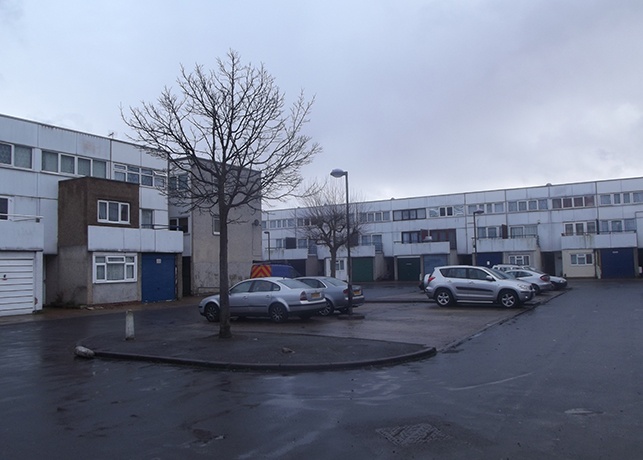
Pollards as it looks now
The regeneration programme therefore encompasses everyone living on the estate, not just Moat tenants. Four-hundred existing Moat homes will be extensively refurbished during the regeneration and a range of refurbishment works will also be offered to a further 450 freeholder properties.
Unlike many social housing regeneration projects, the mixed-tenure nature of the housing estate is something that Moat aims to fully embrace on the project, says Ms Burke.
“[We want to] bring the community much closer together,” she says. “There are quite distinct generational or cultural groups and we feel that through this project we can pool those together and build a community, and that is going to solve some of the management issues that we face and residents have to live within.”
Given that the social regeneration of the project is just as important as the physical regeneration, it was essential for Moat to work with a contractor that had a strong understanding of social value. This was particularly the case here because the refurbishment work is to be undertaken over several years, while people continue to live in their homes.
After a competitive dialogue, the association picked United Living as its delivery partner for the new build and the refurbishment parts of the regeneration.
“What really struck us was the diversity in the social value proposals that they gave and the way in which they presented to us how they would communicate with residents and manage residents’ expectations,” Ms Burke explains.
She says that the Pollards Hill project, unlike some other schemes, represents a “proper regeneration”, namely because it is truly mixed tenure.
“We are not all doing compulsory purchase - moving them out, knocking it down and basically starting again. To me, that is a decant and new build. This is a regeneration,” she concludes.
The project is scheduled for completion by December 2019.
